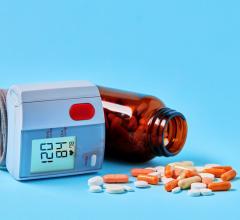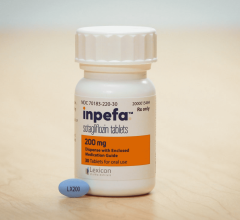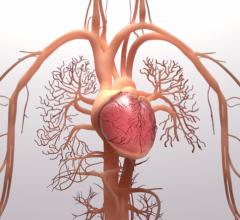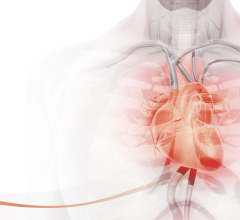
The Vocera System allows users to instantly communicate with each other throughout the hospital.
Safe medication administration at the hospital bedside is not simply a matter of a nurse handing out the right meds at the right time and to the right patient, of course. Today, the practice is a cooperative effort between the nursing staff and the pharmacy working to maximize the benefits of information technology solutions, such as bar coding and wireless.
For hospitals who effectively employ it, this three-pronged approach to patient safety is paying big dividends.
Coding safety, staying connected
A key element of the Joint Commission's National Patient Safety Goals and Requirements continues to be improving the safety of medication use in hospitals. As a result, facilities such as Progress West Healthcare Center, O'Fallon, MO, are adopting new approaches to medication reconciliation.
Although bar coding in hospital pharmacies has been around for some time, it has become more popular within the last four or five years due to the added patient safety hospitals are realizing, and new developments in the technology.
"I've heard estimates of up to 43 percent reduction in hospital medication errors due to bar-coding systems," said Bob Manchester, R.Ph., Manager of Pharmacy, Progress West.
In the pharmacy, where the process of safe medication administration begins, pharmacists associate the bar code on the medication received from manufacturers to a particular product in their inventory. When the product is entered into the computer system, it maps to that particular bar code. For products that arrive in bulk packages or are not bar coded at all by the manufacturer, a unit-dose packaging system enables the pharmacists to create bar codes for these drugs on site.
Medications at Progress West are delivered from the pharmacy to the patient floor through an addressable tube system, which is opened through a security code known only by the pharmacist.
"At our facility, there is a pharmacist on every floor at all times," said Manchester. "We do all of our order entry on the nursing division instead of down in the central pharmacy."
In addition, for better accuracy, the pharmacists, rather than the nurses, take the patients' medication history. Nurses don't know the drugs," said Manchester. It's just not their area of expertise, he explains.
As the pharmacists and nurses roam the patient floors, they stay connected through the use of Vocera's wireless communication system.
The Vocera Communications Badge is a wearable device that Progress West clinicians hang around their necks to enable instant two-way voice conversation without the need to remember a phone number or manipulate a handset. The badge is controlled using natural spoken commands. When a live conversation is not necessary, text messages and alerts can be sent to the LCD screen on the back of the Vocera Communications Badge.
"Nurses will constantly call us during the day on the Vocera to let us know about new orders, new admittances, med reconciliations, or with a variety of other requests," said Manchester.
The WOW factor
For additional safety and efficiency, each patient room at Progress West has its own medication-stocked workstation on wheels (WOW) -- the iPoint from Lionville -- that a nurse can only open with a pharmacist-programmed badge. The nurse swipes the badge over the card reader and in the process, the system identifies who has the opened the cart and when. By bar coding the patient's wristband and the medication package, nurses can intercept potential medication errors at the bedside. If there is an error with the medication, the dose or the timing of administration, the computer will flag it.
In addition to supporting bar-coded medication administration, the iPoint also accommodates clinical information systems such as the pharmacy system, documentation systems and drug information databases.
"iPoint has all the applications on its computer that are on the computers at the nurse's station. It helps us manage massive amounts of information in a shorter period of time and with more accuracy," said Norma Hein, RN, Administrative Leadership Consultant with B.E. Smith, Lenexa, KS, serving as interim Patient Care Services Manager, Progress West.
For example, Hein says, when an elderly female patient was recently admitted from a nursing home, her son mentioned that his mother is allergic to acetaminophen. The nurse entered that information into the iPoint while doing the admission assessment and immediately the information was flagged in the pharmacy. The woman's doctor had already written admission orders for a pain medication that contained acetaminophen. The flag alerted the pharmacist to notify the doctor to change the pain medication order. As a result, a problem that may have taken hours to catch was short-circuited in five minutes," said Hein.
Laurie Corey, RN, care traffic coordinator at Progress West, likes that the iPoint can be specially programmed to be opened by touch key rather than by fingerprint. This means an authorized nurse does not have to remove her glove to open the electronic medical record, an important consideration when caring for a patient on isolation precautions.
"iPoint's ability to perform bedside electronic documentation and medication administration helps us maintain quality of care here at Progress West by supporting our Service Priorities of patient safety and caregiver efficiency," said Corey.
Hein agrees. "I travel to hospitals coast to coast and the medication reconciliation process, aided by the iPoint system, is the best I have seen," she said.
Safety at the pump
When Virtua Health, a multihospital system in New Jersey, was looking to streamline their medication delivery process, they thoroughly evaluated different systems over a 18-month period.
"We needed to implement one software solution for managing our medication infusion devices, and standardize our drug library," said Robin Keyack, clinical resource manager for Virtua.
Virtua decided on Hospira's medication infusion systems -- the Plum A Infusion System along with MedNet safety software.
The Plum A multipurpose infusion system enables precise delivery of multiple therapies across the care continuum, complete with mandatory confirmation screens that help clinicians avoid medication errors. With a variety of programming options, facilities can customize the system to specific patient needs. When combined with the MedNet Software, report capabilities and additional drug usage information are available. The software can connect data from the hospital's drug information library to infusions devices throughout the hospital.
According to Virtua, since its implementation, the combined solution has had a positive impact on every one involved in the medication process. Pharmacists can review how many times a particular drug is accessed, or an alert is overridden. Clinicians report that they can now reaffirm their dosing calculations, eliminating potential dose administration errors. Most important, patient safety has been increased.
"In my opinion, using Hospira MedNet every time medication is administered is the recipe for safe IV patient therapy," said Keyack.




 July 10, 2024
July 10, 2024 








